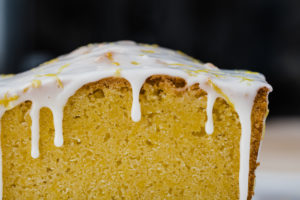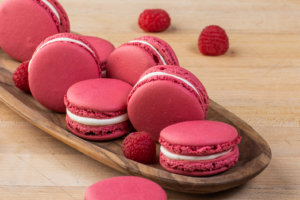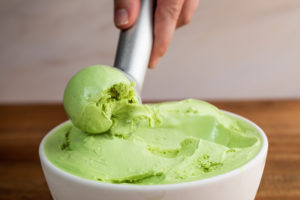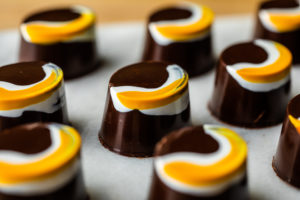With so many different types of natural colors from a such wide variety of sources, choosing the right one can be difficult. Whether you’re creating cakes, cookies, frostings, or fillings, there are some important factors to consider when choosing a natural colors. We’ve broken down the top 5 considerations when coloring bakery applications.
1. Ingredient Interactions
Setting a target hue is the first step toward successfully creating vibrant baked goods since so many factors in bakery can affect it. Knowing what your finished product should look like and what kind of ingredients could impact it is critical. Is your product a yeast-risen bread or a chemically leavened cupcake? Leavening agents can affect the pH of the dough or batter, which can then affect the color expression of colors like anthocyanins.
Other ingredients can also cause hue variation when added or removed from the formula. For example, the addition of cocoa powder can affect the color expression of beet color in a Red Velvet cake. The lack of eggs in vegan baked goods or alternative flours in gluten free products can impact the final color, as seen in the below cupcakes.

2. Baking Conditions
Another key factor when choosing a natural color for bakery is knowing the baking and processing conditions. The cook time, temperature, and even the kind of oven used can help determine the best natural colors to choose. Cake and bread applications need colors with excellent heat stability to sustain extended bake times. These include turmeric, Emulsitech® beta-carotene, annatto, class I caramels, and carmine. Cookies and wafers have shorter baking times opening the doors to additional colors like beet.
It’s also critical to understand the cooling process and timing of a baked good since some natural colors may fade, like the beet in the cupcake below (right). You can overcome this by overdosing a bit, or adding a little more up front, to offset any color fade that may occur (center cupcake). Even the size of a baked good can cause significant differences. For example, a full sheet cake will have different heating and cooling curves than a cupcake, and that can make all the difference in the final hue of the product.

3. Labeling
Deciding which claims and ingredients you want listed on the label is an important decision that should be made early in product development. Different natural color products can carry different certifications, such as Kosher, Halal, Certified Organic, and non-GMO project verified. By letting us know which certifications you’d like to have on the label, we can help make the right natural color choice. This is also true for how you’d like the color listed on the label, such as ‘Vegetable Juice Color’.
4. Regional Limitations
Understanding regional limitations or parameters for your naturally colored baked good will also help you decide which color to select for your product. Every country has their own regulatory requirements, so it’s important to know where you will be selling your bakery product as this can impact natural color selection.
Some regions have use rate limits for particular color sources. For example, in the EU, there is a legal maximum use rate of carmine in bakery products. Sometimes, manufacturers have restrictions on how much color can be added due to formula limitations, so understanding those limits is important when coloring foods.
5. Packaging, Storage, and Shelf-life
Knowing the potential shelf life of bakery items and how they’ll be displayed or packaged is extremely critical to picking the right natural colors for your products. Will your bakery item be exposed to light? And for how long? Baked goods can be packaged in multiple ways and can have different shelf-life expectations. For example, a cupcake may be expected to look vibrant in a transparent wrapper for a few days, but a cookie may be in a completely opaque bag for several months.
Some colors are more light-stable than others, so this can affect whether your bakery item will look as good on day 5 as it did on day 1. Turmeric is a great heat stable yellow option for baked goods but is not light stable and would require opaque packaging. If your using transparent packaging opt for beta-carotene instead.
Figuring out how to choose the right natural color for your bakery application can be challenging, but when you choose the right one, your brilliant bakes will really shine! Need some help deciding? Contact us with your questions.






